Spontaneous autoimmune gastritis and hypochlorhydria are manifest in the ileitis-prone SAMP1/YitFcs mice
- PMID: 21921286
- PMCID: PMC3345967
- DOI: 10.1152/ajpgi.00194.2011
Spontaneous autoimmune gastritis and hypochlorhydria are manifest in the ileitis-prone SAMP1/YitFcs mice
Abstract
SAMP1/YitFcs mice serve as a model of Crohn's disease, and we have used them to assess gastritis. Gastritis was compared in SAMP1/YitFcs, AKR, and C57BL/6 mice by histology, immunohistochemistry, and flow cytometry. Gastric acid secretion was measured in ligated stomachs, while anti-parietal cell antibodies were assayed by immunofluorescence and enzyme-linked immunosorbent spot assay. SAMP1/YitFcs mice display a corpus-dominant, chronic gastritis with multifocal aggregates of mononuclear cells consisting of T and B lymphocytes. Relatively few aggregates were observed elsewhere in the stomach. The infiltrates in the oxyntic mucosa were associated with the loss of parietal cell mass. AKR mice, the founder strain of the SAMP1/YitFcs, also have gastritis, although they do not develop ileitis. Genetic studies using SAMP1/YitFcs-C57BL/6 congenic mice showed that the genetic regions regulating ileitis had comparable effects on gastritis. The majority of the cells in the aggregates expressed the T cell marker CD3 or the B cell marker B220. Adoptive transfer of SAMP1/YitFcs CD4(+) T helper cells, with or without B cells, into immunodeficient recipients induced a pangastritis and duodenitis. SAMP1/YitFcs and AKR mice manifest hypochlorhydria and anti-parietal cell antibodies. These data suggest that common genetic factors controlling gastroenteric disease in SAMP1/YitFcs mice regulate distinct pathogenic mechanisms causing inflammation in separate sites within the digestive tract.
Figures
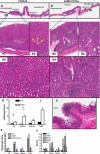
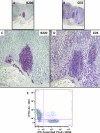
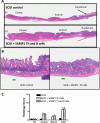
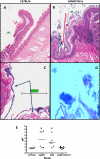
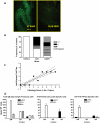
Similar articles
-
Pathogenesis of gastritis in ileitis-prone SAMP1/Yit mice.Keio J Med. 2011;60(2):65-8. doi: 10.2302/kjm.60.65. Keio J Med. 2011. PMID: 21720202 Review.
-
Beta7 integrin deficiency suppresses B cell homing and attenuates chronic ileitis in SAMP1/YitFc mice.J Immunol. 2010 Nov 1;185(9):5561-8. doi: 10.4049/jimmunol.0903938. Epub 2010 Oct 6. J Immunol. 2010. PMID: 20926792 Free PMC article.
-
Expanded B cell population blocks regulatory T cells and exacerbates ileitis in a murine model of Crohn disease.J Clin Invest. 2004 Aug;114(3):389-98. doi: 10.1172/JCI20855. J Clin Invest. 2004. PMID: 15286805 Free PMC article.
-
In vivo demonstration of T lymphocyte migration and amelioration of ileitis in intestinal mucosa of SAMP1/Yit mice by the inhibition of MAdCAM-1.Clin Exp Immunol. 2005 Apr;140(1):22-31. doi: 10.1111/j.1365-2249.2005.02742.x. Clin Exp Immunol. 2005. PMID: 15762871 Free PMC article.
-
SAMP1/YitFc mouse strain: a spontaneous model of Crohn's disease-like ileitis.Inflamm Bowel Dis. 2011 Dec;17(12):2566-84. doi: 10.1002/ibd.21638. Epub 2011 May 6. Inflamm Bowel Dis. 2011. PMID: 21557393 Free PMC article. Review.
References
-
- Alam MS, Kurtz CC, Wilson JM, Burnette BR, Wiznerowicz EB, Ross WG, Rieger JM, Figler RA, Linden J, Crowe SE, Ernst PB. A2A adenosine receptor (AR) activation inhibits pro-inflammatory cytokine production by human CD4+ helper T cells and regulates Helicobacter-induced gastritis and bacterial persistence. Mucosal Immunol 2: 232–242, 2009 - PMC - PubMed
-
- Bamford KB, Fan XJ, Crowe SE, Leary JF, Gourley WK, Luthra GK, Brooks EG, Graham DY, Reyes VE, Ernst PB. Lymphocytes in the human gastric mucosa during Helicobacter pylori have a T helper cell 1 phenotype. Gastroenterology 114: 482–492, 1998 - PubMed
-
- Bamias G, Martin C, Mishina M, Ross WG, Rivera-Nieves J, Marini M, Cominelli F. Proinflammatory effects of TH2 cytokines in a murine model of chronic small intestinal inflammation. Gastroenterology 128: 654–666, 2005 - PubMed
-
- Bamias G, Okazawa A, Rivera-Nieves J, Arseneau KO, De La Rue SA, Pizarro TT, Cominelli F. Commensal bacteria exacerbate intestinal inflammation but are not essential for the development of murine ileitis. J Immunol 178: 1809–1818, 2007 - PubMed
Publication types
MeSH terms
Substances
Grants and funding
LinkOut - more resources
Full Text Sources
Medical
Molecular Biology Databases
Research Materials

